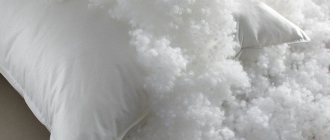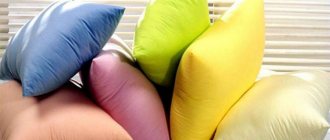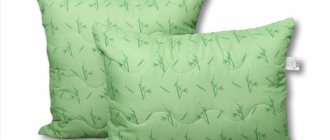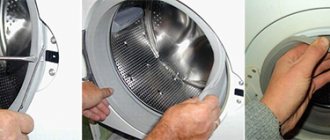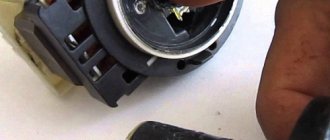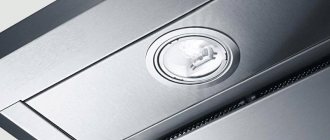The concept of “pillow restoration” sounds exotic, but, nevertheless, it is a promising line of business. Pillows made from feathers and down also remain popular; analogues made from buckwheat husk and synthetic padding have not forced them out of the market. The difference between them is the need for regular cleaning. These are materials of animal origin, so they often accumulate not only a lot of dust, but also dust mites. This is unhygienic and dangerous to health. We tell you what stages are involved in restoring and cleaning feather pillows, what materials are needed and how to register such a business.
Stages of restoration and cleaning of the pillow
Choosing a pillow is a matter of taste. Now purchasing a product with any filler is not a problem. On the market there is padding polyester, down, feathers, buckwheat husks, bamboo, seaweed, cotton, latex and even medicinal herbs. Modern materials have many advantages over feathers and down, but they have not been able to displace them from the market. Such products require special care. Restoring feather pillows involves cleaning the feathers and replacing the pillowcase.
Natural down and feathers tend to accumulate a lot of dust, and dust mites grow in them. A person who uses a dirty pillow may develop allergies, bronchial asthma, conjunctivitis, and Quincke's edema. You should not neglect your health, especially since there is absolutely nothing difficult in restoring pillows. This operation allows you to solve several problems at once:
- get rid of dirt and mites;
- restore the volume of the product;
- eliminate unpleasant odors;
- replace a worn napper.
Cleaning pillows takes place in several stages:
- opening the product - the pillow is ripped open;
- the filler is poured into a special apparatus for dry processing;
- cleaned feathers and down are placed in a fresh pillowcase (pillowcase).
The natural filling of pillows - down and feathers - must be regularly cleaned of dust and mites
How often should you change or clean your pillow?
The frequency of changing sleep products depends on the person’s health and skin condition. If you have oily skin, then you should change your pillow once every 4-5 months. The pillowcase is changed every 3 days. The recommendations also apply to people with excessive sweating.
Over time, a huge amount of desquamated epithelium accumulates inside the napkin, and skin mites multiply. Sebum and sweat become breeding grounds for fungal infections.
If you are lucky and have normal skin, then you can change your pillow once a year. It is recommended to change bed linen once a week.
Litter cleaning equipment
It is impossible to clean the feathers in pillows on your own. Wet washing is difficult and does not give the desired results. It is virtually impossible to eliminate ticks at home; this requires special equipment. It carries out dry cleaning: a strong flow of air and filters separates dirt from the filler. Also, such devices treat down and feathers with ultraviolet radiation, which destroys all bacteria.
Such devices do not use cleaning agents or chemicals, so they are absolutely harmless even for those who suffer from allergies.
You can buy cleaning equipment for an average of 70-100 thousand rubles. Outwardly, they resemble old washing machines: the same design and approximately the same size. They work without a break from 10 to 40 minutes. Between starts you need to make short stops for 2-3 minutes. The devices are easy to use and can be operated by 1 person.
Popular manufacturers of dry cleaning devices for pillows:
- VITA Start;
- domain;
- Duplex;
- Business Comfort.
In addition, for restoration you will need a sewing machine: to sew clean feathers into a new bedspread. Price - about 10 thousand rubles.
Main characteristics
The choice of device for operation should be based on the characteristics of energy consumption, maximum operating time and configuration. The average power will be 4.8 kW, the network voltage will be 220–240 V. Businesses need devices that can operate continuously for an average of 30 minutes, with a short break between cycles - 2-3 minutes.
It is important to pay attention to such a characteristic as “maximum exposure time” - this is the time that the filler will be treated with ultraviolet or bactericidal radiation. 3–5 minutes is enough.
This is a large piece of equipment that will take up approximately 2 square meters. It weighs at least 100 kg, more often 130–150. Often such installations are multitasking: they clean not only pillows, but also feather beds and blankets. This is useful for business, as it expands the circle of clients.
Self-repair of equipment
Manufacturers guarantee pillow cleaning devices a 12-month warranty. Therefore, until they expire, you should not repair the devices yourself. They must be returned to the manufacturer for repair. This is not always easy due to the size of the equipment. It is good if the manufacturer not only delivers, but also undertakes to pick up the equipment in case of breakdown on its own.
If the warranty period has expired, you should contact a specialist or find information on the Internet about a specific breakdown. Such machines are not very complex devices, but still require some professional knowledge. When purchasing them, they often come with several spare parts and instructions.
Special equipment cleans the filler like a vacuum cleaner and treats it with ultraviolet light.
Machine washable
To clean feather pillows yourself in the washing machine, the filler is also placed in small bags, which must be securely sealed.
- Load the feather bags into the machine drum.
- Fill the detergent and conditioner containers.
- Select a program for washing delicate fabrics or wool.
- Set the spin speed to the lowest possible, otherwise the fluff may spoil.
- It is recommended to set it to double rinse.
- Start the machine and after the end of the cycle, hang the bags to dry.
On a note! Feathers take a long time to dry. You can dry bags near heating appliances, but not too close to them.
When the feathers are dry, carefully place them in a clean bedsheet and sew it up. Clean pillow ready for further use.
Documents for business registration
The pillow restoration business can be run in the form of an individual entrepreneur or LLC. Individual entrepreneurs seem to be more profitable: simpler registration, simpler reporting. A pillow cleaning station does not need a lot of staff, sometimes even 1 person (the entrepreneur himself) can do the job. A special license to operate is not required, but the premises must receive a positive conclusion from the sanitary-epidemiological service and fire inspection, and also have all the documents for the equipment.
Such an enterprise is classified as a consumer service facility, so you need to obtain the appropriate certificate for it. This is free and can be done through State Services. You need to prepare:
- documents for the premises;
- extract from the Unified State Register of Legal Entities;
- application (the form is on the portal);
- an extract from the unified state register of rights to real estate and transactions with it for the premises of a public service facility for the population;
- price list.
This certificate will give the entrepreneur the right to apply UTII - a convenient tax regime. It is allowed to entrepreneurs and organizations working in the field of consumer services. Requires a staff of less than 100 employees (more likely, 2-3 employees will be involved in restoration). Tax payment is a fixed amount once a quarter.
The cost of cleaning one pillow is from 200 to 500 rubles
Documents for opening a mobile restoration center
As an option, you can open a mobile pillow cleaning station: not rent a room, but equip a van with a restoration apparatus. This activity will be classified as traveling trade. It can also be carried out on UTII. To start working, you need to obtain permission to engage in traveling trade. Such a document is issued by the municipal administration upon presentation of:
- certificate of registration with the Federal Tax Service;
- conclusion of the sanitary-epidemiological service;
- car/van certificate;
- certificate of registration of a consumer service facility;
- list of services and price list.
Proper drying of pillows
Only by thoroughly drying the pen will we avoid fungus, mold and unpleasant odor. The natural drying process takes 2-3 days.
You can place the feather to dry on a balcony or loggia, covering it with one layer of gauze so that it does not fly away from the wind. If the loggia is covered, you can do it without gauze, but avoiding drafts. Of course, you should put something moisture-absorbent - paper or fabric, a lint-free towel. In winter, this method is especially effective, since the frosty air will additionally disinfect the feather.
In the cold season, you can also spread fluff near the heaters, but not on the battery itself. Remember that the larger the area for the filler to dry, the faster it will dry.
During drying, the pen should be turned over several times. If you didn’t pay attention and it has already clumped into a lump after drying, place the filling in a pillowcase and beat it with a cracker. There is also an exotic method with a vacuum cleaner: place the fluff in a thick garbage bag, insert a pipe, and wrap the joint with tape. First of all, you need to suck out the air, then blow it in again. Repeat twice.
There are times when nothing helps, and the dried feathers emit a stench - then you need to wash everything.
If you dry the filling in bags, then simply secure them with clothespins on a rope or place them on a clothes dryer, shaking the contents of the bags periodically. It’s even easier to put it in the washing machine dryer and set the temperature to 30° C.
Before refilling a new or old quilt, you need to make sure the feather is completely dry. When sewing, stitches should be done “overlapping” - in fact, classic hand stitches, or even make two rows of stitches.
Is this business profitable?
Restoration of down pillows, as well as feather ones, is a business with average profitability. For many people, the need to clean down and feathers is not obvious; some use pillows with other fillings. Therefore, you need to work a little on attracting customers through advertising and social networks.
What is the price for such services? Restoration costs on average from 200 to 500 rubles. This price is not so modest, because you can sometimes buy a new pillow for the same money. If you receive at least 10 clients a day, you can earn at least 2 thousand rubles. The investment will pay off within a year. To earn more, you can combine pillow restoration with other similar services (dry cleaning, cleaning blankets and feather beds).
Feather compost
Most gardeners know exactly what compost is, since they themselves use it to fertilize their garden. In fact, it is humus from various plants, remains of vegetables and fruits. But few people know that the feathers used to stuff pillows can also be excellent compost.
It’s enough just to scatter them over a separate area of the garden for the sake of experiment and dig them up with soil. It is best to do this in the fall so that the feathers have time to lie in the ground long enough. You will be surprised, but next year's harvest will pleasantly surprise you.
Preparatory stage
Before you start washing feathers or down, you need to perform a number of operations:
- Dry the pillow well in the sun in a ventilated place.
- Beat it thoroughly with a carpet flapper.
- While the pillow is drying, it is advisable to prepare four to six feather washing bags or one larger one made of thick fabric (linen or calico).
- It is also necessary to prepare a vacuum cleaner in case of unforeseen situations.
- To reduce the consequences of washing, place a sheet over the work area, moisten it with a little water and ensure there is no draft.
- Make a hole in the pillow along the seam and place a small amount of feather in a basin, and from there into the cover prepared for washing.
- Sort all the fluff into bags.
- The hole in the covers must be sewn tightly, bending the edges inward.
- A pillowcase that has been freed from fluff can be used a second time only after a thorough separate wash.
Pre-wetting the pillow in water can help make the work of distributing the feathers into the covers easier.
Next, you need to decide on a detergent. It is better to use liquid, which contains lanolin, which has a beneficial effect on the dirt-repellent properties of the feather. The use of dry powder can lead to the presence of residues in the fluff, which is not able to be washed thoroughly. It is also undesirable to use substances with a strong aromatic effect or conditioners. There are tips about adding a drop of dishwashing detergent or hair shampoo.
There are also homemade products for washing feathers:
- a tablespoon of liquid washing powder or gel is mixed with a tablespoon of baby dishwashing detergent and a tablespoon of bleach, to which half a tablespoon of borax is added;
- 150 grams of grated laundry or baby soap and one teaspoon of 10% ammonia are diluted with 5 liters of water.
Which equipment is better to choose?
When choosing equipment that will be used to clean or restore pillows, it is best to pay attention to equipment that not only has a warranty card, but is also tested before sale.
The coupon for purchasing machines includes a one-year warranty, repair and replacement of all small parts, electrical components and housing, professional installation, and technical support. The technician must arrive within 24 hours after the breakdown. And also many companies offer not only the visit of their master, but also the delivery of parts, if there is such a need.
On average, the safe service life is approximately 3 years. And since the design is simple and there are no complications in it, you can carry out basic repair work yourself without a specialist.
